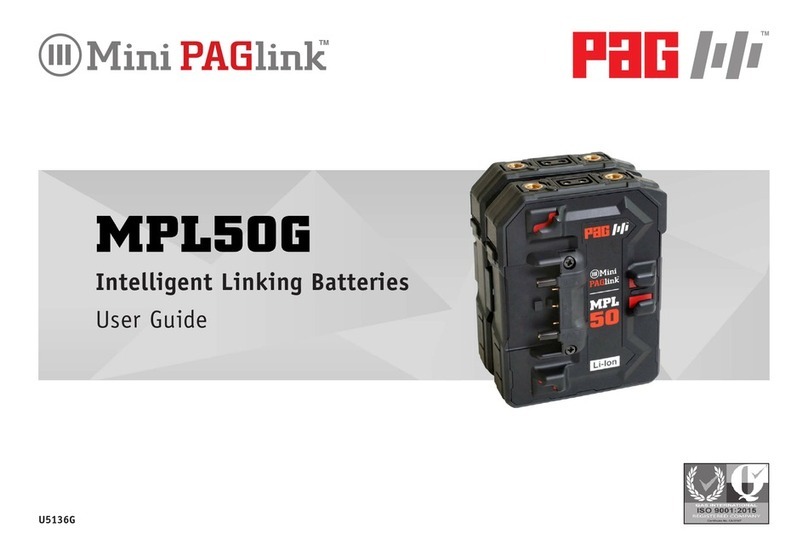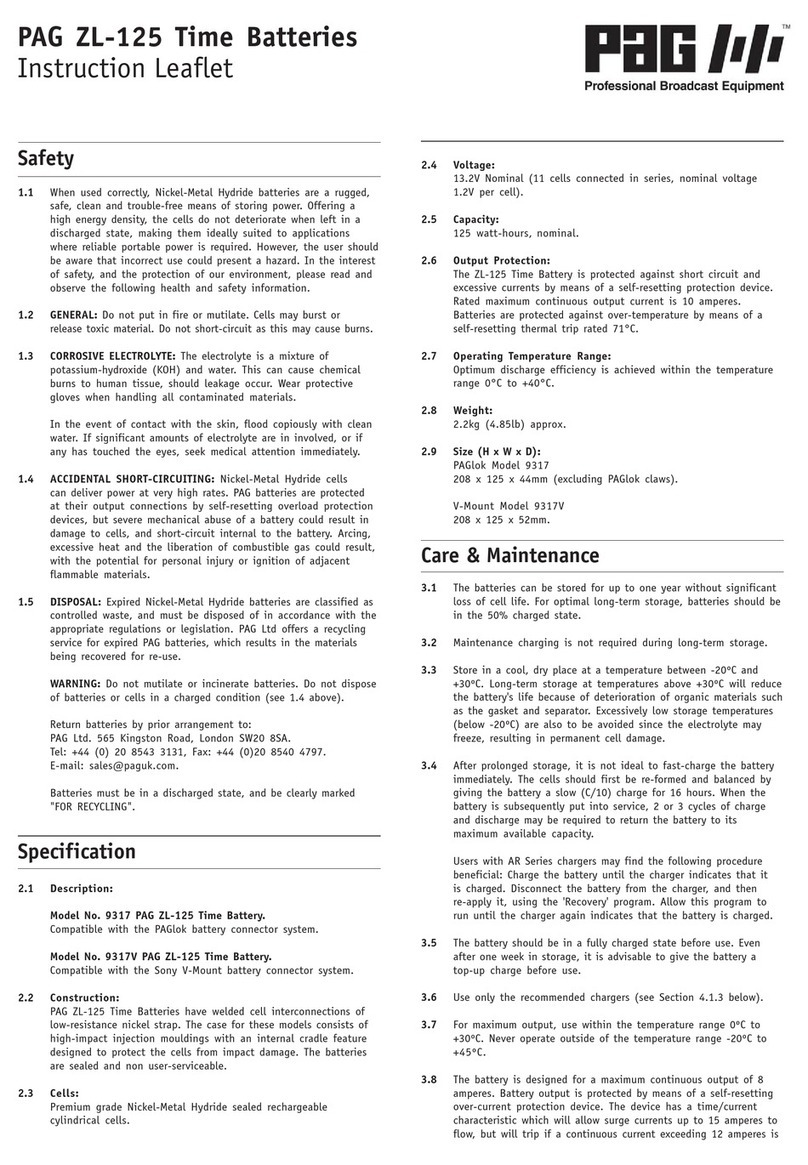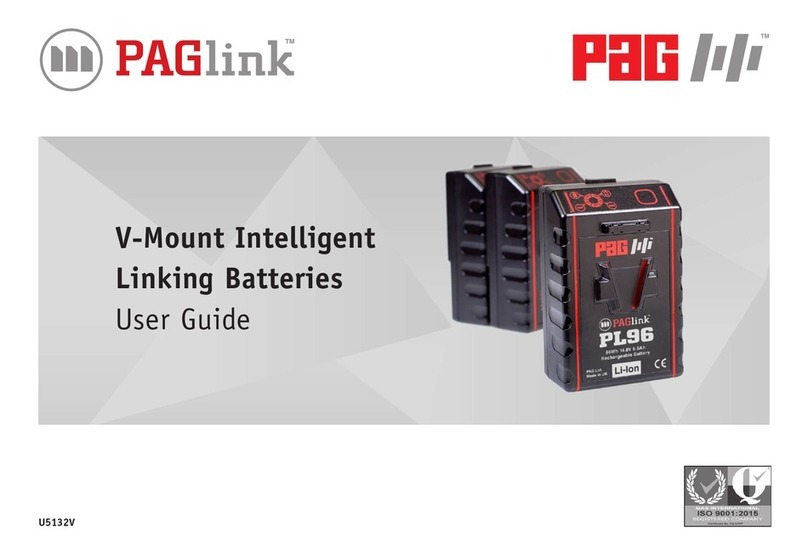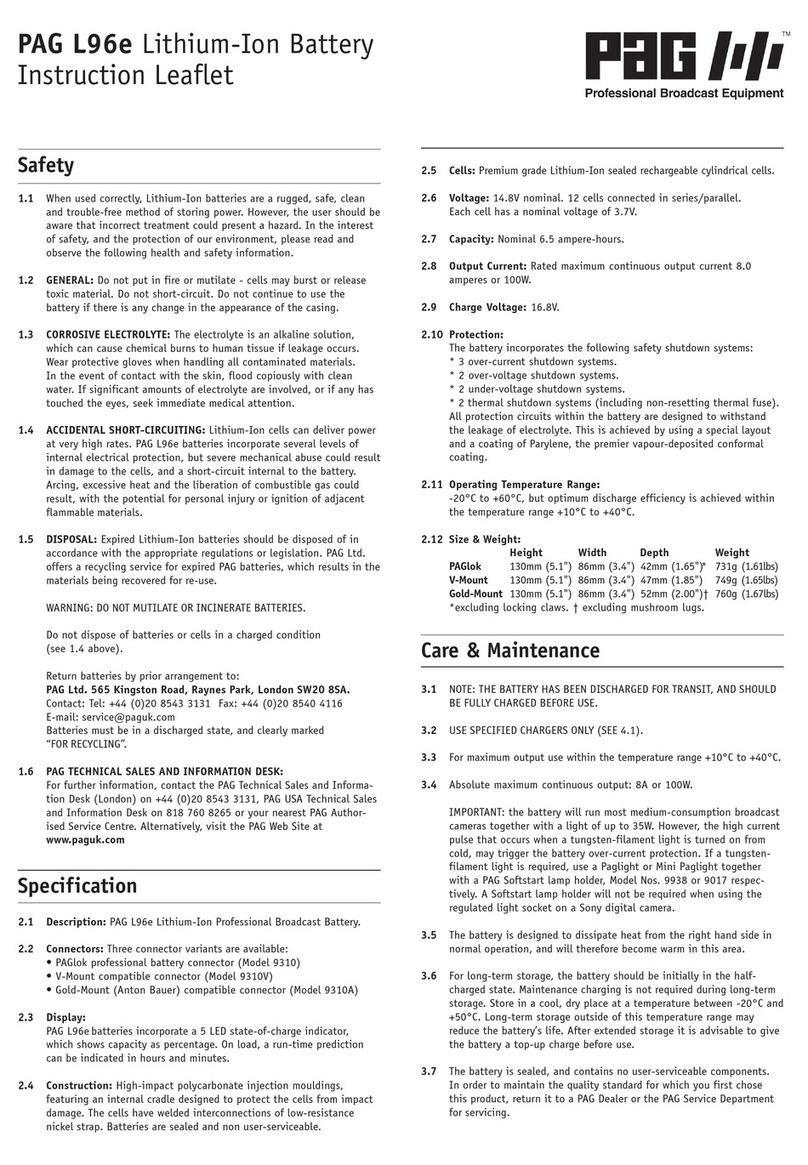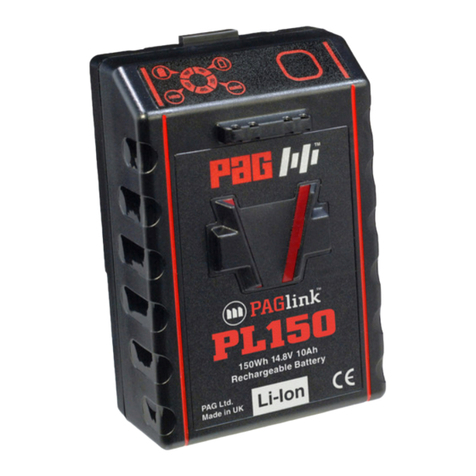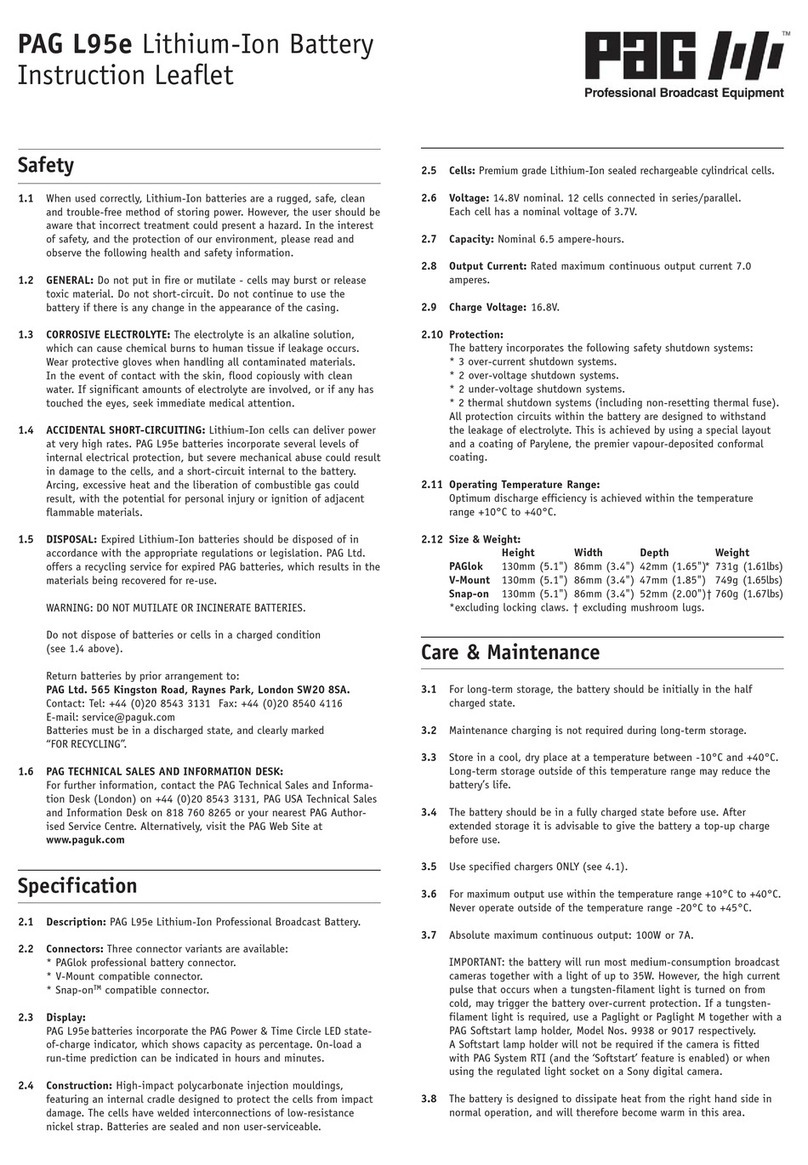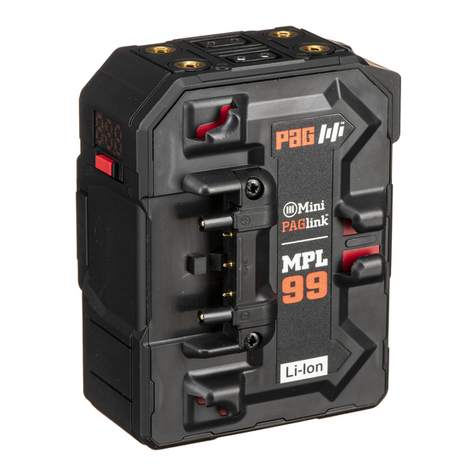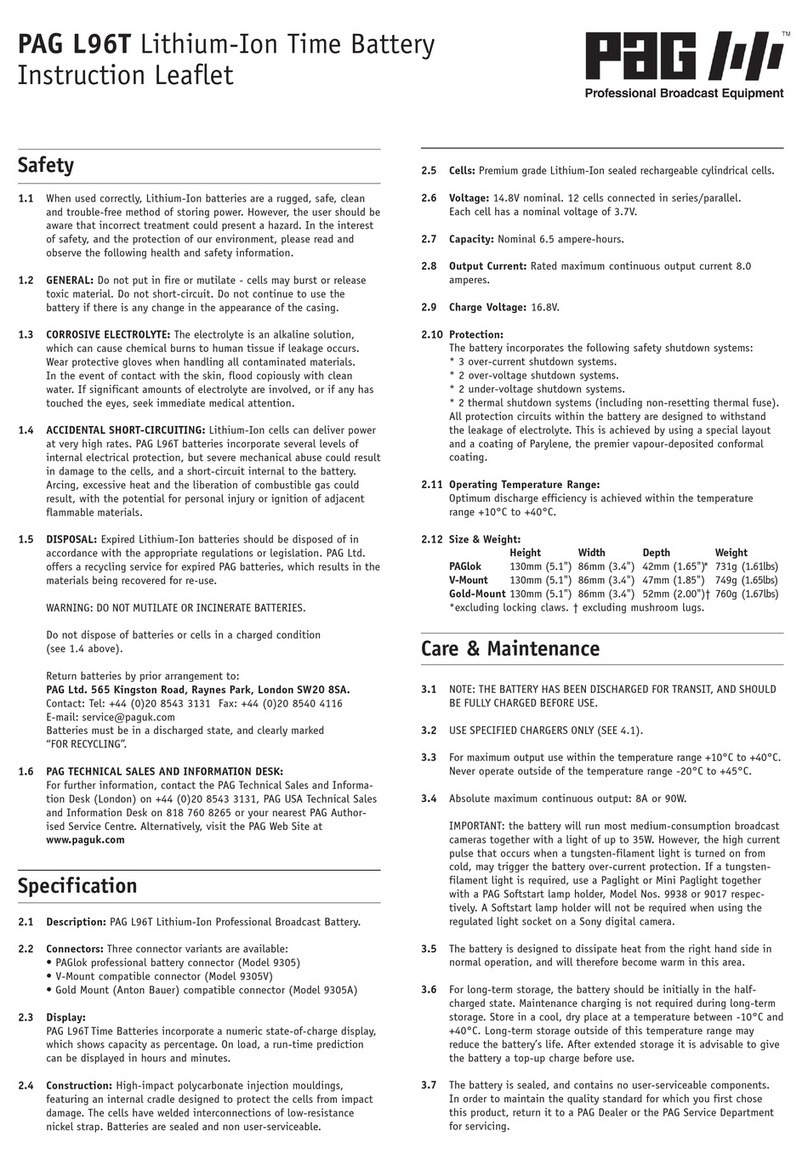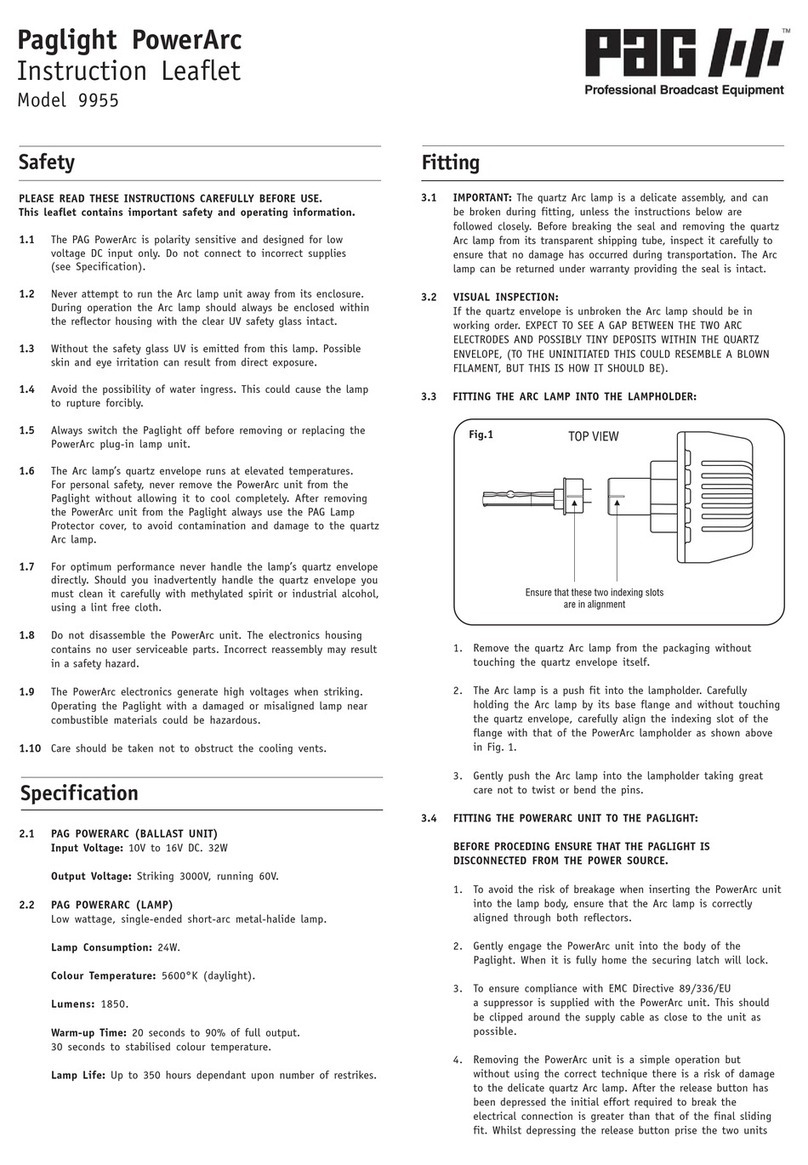
8
4. Discharging
4.1 The battery incorporates a precision fixed end-of-discharge cutoff, set
to 12.5V, as measured by the battery. This cutoff will operate only if
the battery capacity is less than 5%, eliminating unwanted cutoff
operation due to high current and low battery temperature.
4.2 Maximum continuous discharge current is 10A. The battery incorpo
rates an accurate precision current limit, and consumption above 10A
(for more than 5 seconds) will trigger the over-current protection,
turning the battery output off.
4.3 If the battery is discharged at too high a rate, even momentarily, the
protection circuit may be triggered, disconnecting the battery output.
4.4 If the battery has been shut down by its protection circuit it can be
recovered by simply removing it from the load and pressing the
display button, provided the battery still retains some charge.
4.5 The battery may be discharged within the temperature range -20°C to
+50°C, but for optimum performance +10°C to +40°C is recommended.
When the battery has been discharged at a high rate it will become
warm, and it is advisable to let it cool before charging. The operating
time will be shorter in conditions of low temperature, and discharging
will be electronically inhibited if the battery temperature is below -
20°C.
4.6 Computer Reset
The battery features a computer reset function, which may be required
in exceptional circumstances. This is achieved by holding-in the
display button for 20 seconds.






